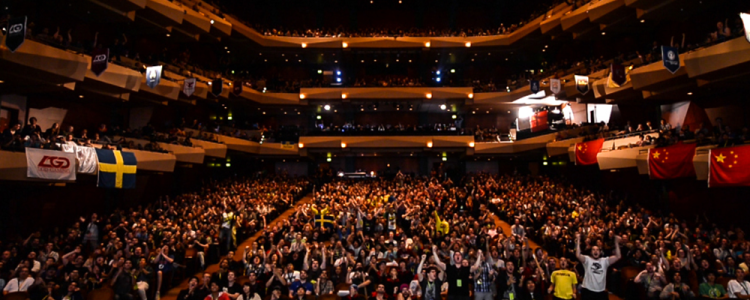Here’s a statistic that certain traditional sports casters can chew on: Esports attracts an audience of over 15 million fans. That’s a lot of eyeballs generating a ton of potential marketing opportunity.
This is according to a report by video game industry research firm EEDAR, which observed the habits of 2,000 esports spectators and compared them against the demographics of those that participate in competitive gaming. Thirty-six percent of the pool that was observed were women, and the average age of all participants was around 26 years old.
Ed Zhao, a business analyst for EEDAR, explains how it approached the report. “Two-thousand [people] responded who talked about their experiences and answered questions we had regarding pretty much all of esports. In particular, we are really interested in the current [esports] consumer and what kind of make up that consumer is. We know a lot of other companies have been doing a lot of broadcasting and revenue predictions and such, but we felt we were missing who this consumer actually is and how they’re different from the general population that plays games.”
One interesting piece of information is the participation rate in esports. Fans primarily watch for the excitement of seeing high-level play, but they don’t necessarily have a desire to compete themselves. Which makes sense to me, as that is a common response I receive from friends who don’t play Street Fighter yet are glued to Twitch during EVO, the largest major fighting game tournament in the country.
When it comes to the biological gender of the audience, the group found that audiences for multiplayer online battle arena (MOBAs like League of Legends and Dota 2) and shooters were primarily male, hovering between 70 percent and 75 percent. Fighting games attracted slightly more female fans (around the 33 percent mark). The report suggests that part of this may be because the fighting genre is more inclusive than the other esports games, seeing as a third of its participants are female.
Not all household brands are skipping this potential advertisement gold mine. Coca-cola and Red Bull are noted to be taking advantage of this growing market. Still, what seems to be holding other major brand owners back from esports?
Zhao sees it as a multipronged situation. “For one, the esports consumer is very conscious of what they see. You can’t just slap anything out there and put it in front of them and expect it to resonate,” he says.
“The brands that have been really driving this forward have been things like Razer, which obviously they make great gaming peripherals, but then you see some of the more major brands like a Coke or a Red Bull or a Monster — and all these guys are taking additional steps forward to become trusted brands. Coke is setting up theaters where you can watch the League of Legends world title. Red Bull has their own tournaments that they’re running. It seems like a lot of this market is aware of when companies are simply being marketed in front of them, so they’re a little cautious about which brands they are entering.”
What’s the other issue? Zhao explains that “another part of it is [tied to] the shift that we’re starting to see now, where the focus of digital marketing was on TV, but now a lot of consumers are starting to cut the cable and there is this shift towards live sporting events.
“So right now, I know major brands are trying to navigate that shift, and esports seems like a pretty good destination because you are seeing live events and it is cheaper to broadcast your advertisement online vs. TV.”
One interesting tidbit, which those from brands will want to note, is that physical branded products don’t do nearly as well as in-game purchases. “I think it has more to do with the ease and the price of microtransactions,” Zhao said, “partially because you’re in the game and you’re one click away and those items are usually five to ten dollars. It’s a lot easier to instantly get access to them.
“Those branded peripherals could be $100 dollars and you have to wait for it to get to you. [Microtransactions are] a little bit more about instant gratification.”
Zhao sees this as a good thing and makes a mainstream comparison with the biggest sports league in the U.S. “This does show some of the power of esports, because those in-game microtransactions appear to be doing really well. And that’s a target scalable thing that you want,” he said. “You can look at the NFL right now and how much they’re pushing those daily fantasy leagues … and it’s kind of that same mind set of really scalable additional items that can draw in revenue.”
Those who want access to the white paper can simply fill out a form on EEDAR’s website.
VentureBeat's mission is to be a digital town square for technical decision-makers to gain knowledge about transformative enterprise technology and transact. Learn More

